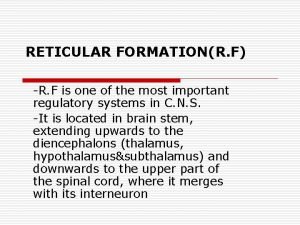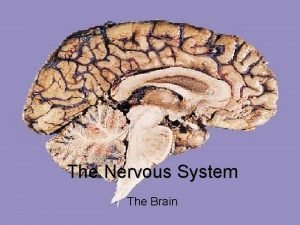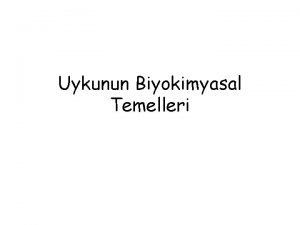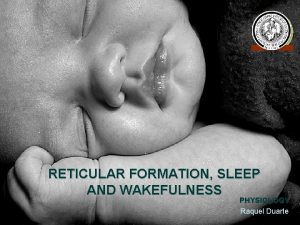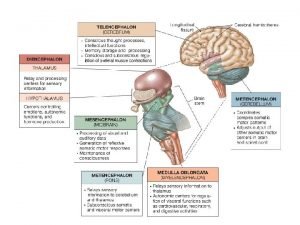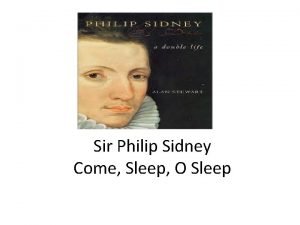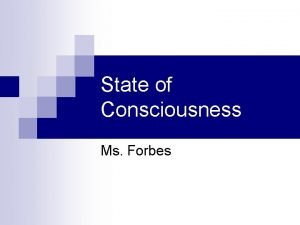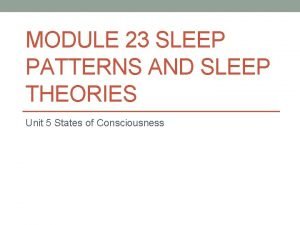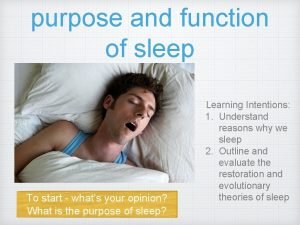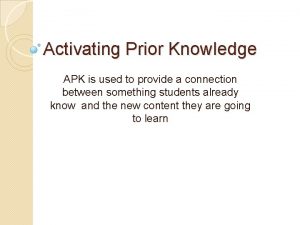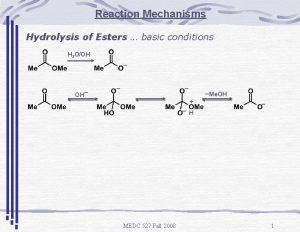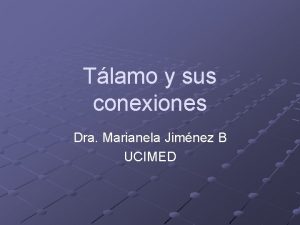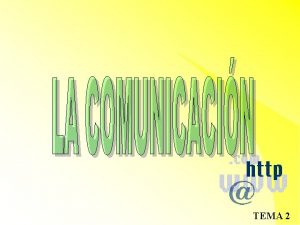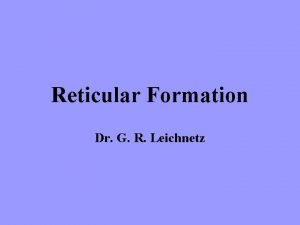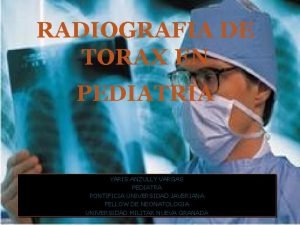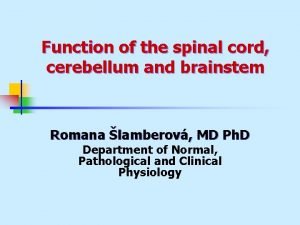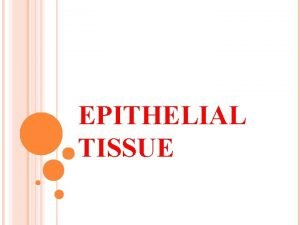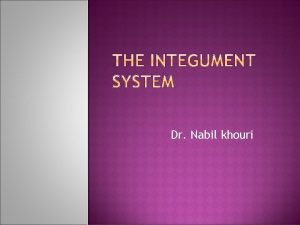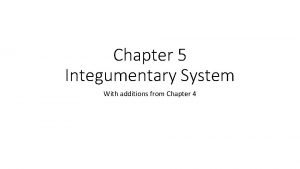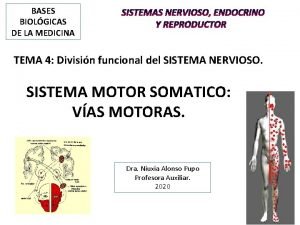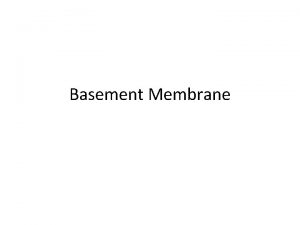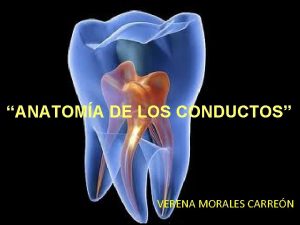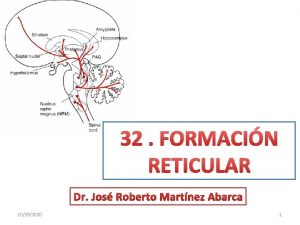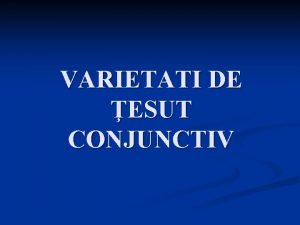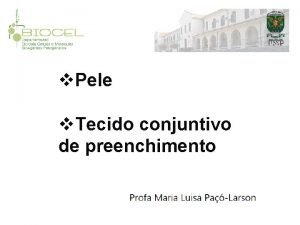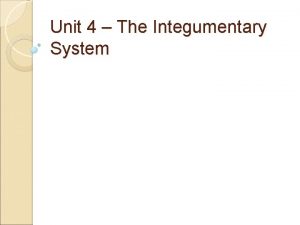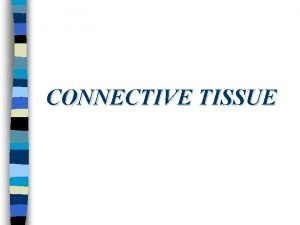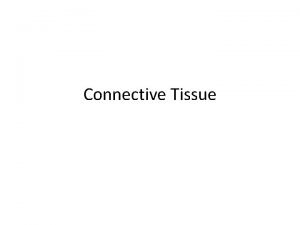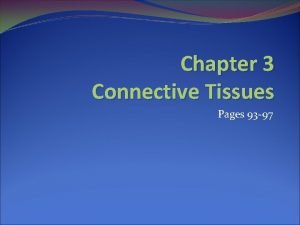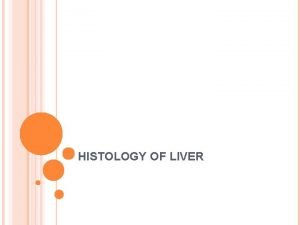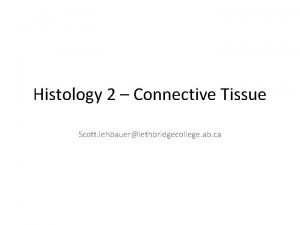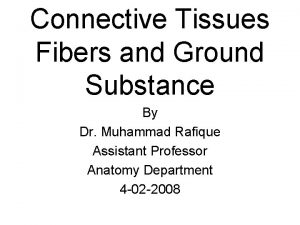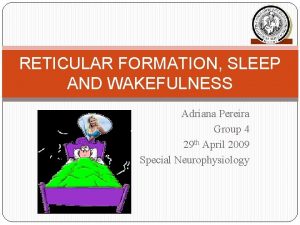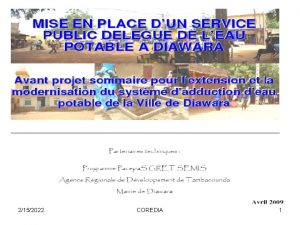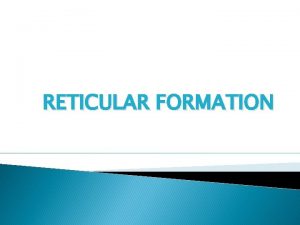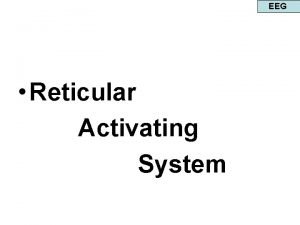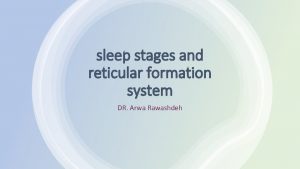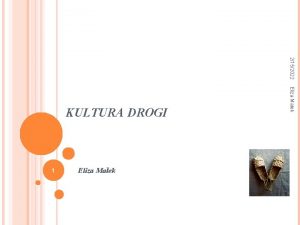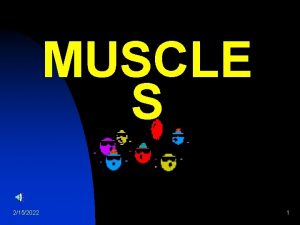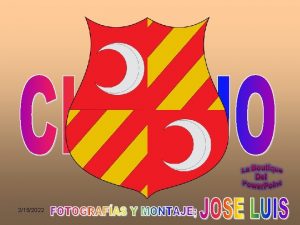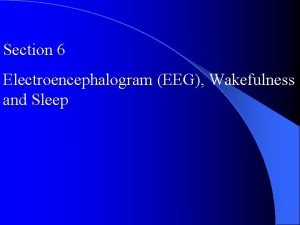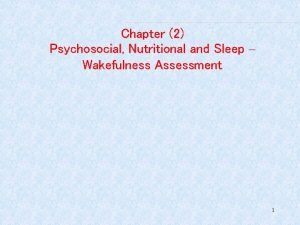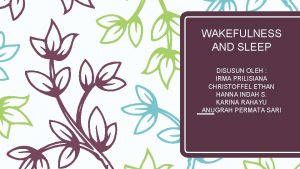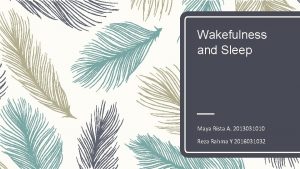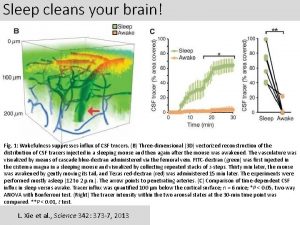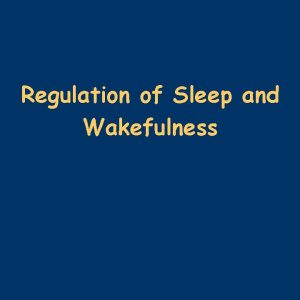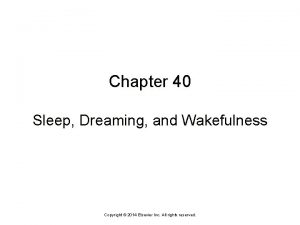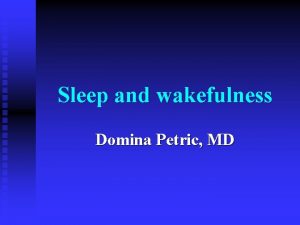Reticular Activating System Wakefulness Sleep 2152022 retuclar activating






































- Slides: 38

Reticular Activating System Wakefulness & Sleep 2/15/2022 retuclar activating system 1

Reticular Formation n Contain areas concerned with – Regulation of HR, BP, respiration n Some descending fibers – Inhibit sensory transmission at spinal cord level 2/15/2022 retuclar activating system 2

Reticular Activating System n Extends through out the brain stem – Mesencephalon – Pons – Medulla 2/15/2022 retuclar activating system 3

Reticular Activating System n Composed of diffuse conglomerate – Nerve cells – Axons of varying types and sizes n Intermingle – Form complex matrix 2/15/2022 retuclar activating system 4

Reticular Activating System n Two types of neurons – With axons ascending – With descending axons 2/15/2022 retuclar activating system 5

Reticular Activating System n The overall system that – Control the degree of CNS activity n Including – Wakefulness & sleep n Electrical stim of RAS – Causes a sleeping animal to awaken 2/15/2022 retuclar activating system 6

Reticular Activating System n Damage of these areas – Brain tumor, hemorrhage – Encephalitis lethargica n Causes coma – Loss of consciousness 2/15/2022 retuclar activating system 7

Reticular Activating System Activation of cerebral cortex n + + Thalamus – Provide intrinsic activity of the brain + n A + B Inhibitory Section of mid brain at “A” – Causes cerebrum to be inactive Excitatory Sensory inputs, touch, pain, temp 2/15/2022 Function of RAS of mid brain n Areas in brain stem – Below mid brain – Excite the activating system retuclar activating system 8

Reticular Activating System Activation of cerebral cortex n + + Thalamus + – Cerebrum remains active A + Excitatory B Inhibitory Sensory inputs, touch, pain, temp 2/15/2022 Section at mid pontine region at “B” n Areas in brain stem – Below mid pons – Can inhibit the activating system retuclar activating system 9

Reticular Activating System Activation of cerebral cortex + n + Thalamus Stimulation of RAS – Leads to wakefulness + A + Excitatory n Inhibition of RAS – Leads to sleep B Inhibitory Sensory inputs, touch, pain, temp 2/15/2022 retuclar activating system 10

Neuro-Humoral Control To thalamus & cerebrum Substantia Nigra Gigantocellular nucleus n Cerebellum Locus ceruleus Raphe nucleus To spinal cord 2/15/2022 Giganto-cellular nucleus – Medial portion of RF – Contain giant cells with • Ascending & descending axons – Principal activator of RAS • Use Ach retuclar activating system 11

Neuro-Humoral Control To thalamus & cerebrum Substantia Nigra Gigantocellular nucleus n Cerebellum Locus ceruleus – Anterior portion of midbrain – Project to wide areas • • Raphe nucleus To spinal cord 2/15/2022 Substantia nigra Basal ganglia Hypothalamus Cerebral cortex Limbic system – Use dopamine retuclar activating system 12

Neuro-Humoral Control To thalamus & cerebrum Substantia Nigra Gigantocellular nucleus n 2/15/2022 – Bilateral beneath 4 th ventricle – Has wide projection Cerebellum Locus ceruleus • Thalamus, cerebrum, RF, cerebellum Raphe nucleus To spinal cord Locus ceruleus n Stimulation of this area retuclar activating system 13

Neuro-Humoral Control To thalamus & cerebrum Substantia Nigra Gigantocellular nucleus n Cerebellum Locus ceruleus Raphe nucleus To spinal cord 2/15/2022 Stimulation of this area – Important in maintaining activity of RAS n Median raphe nucleus – In lower pons & medulla retuclar activating system 14

Neuro-Humoral Control To thalamus & cerebrum Substantia Nigra Gigantocellular nucleus n Cerebellum Locus ceruleus Raphe nucleus Neurons send fibers to – Thalamus, cerebrum, spinal cord – Uses serotonin 5 HT as transmitter To spinal cord 2/15/2022 retuclar activating system 15

Neuro-Humoral Control To thalamus & cerebrum Substantia Nigra Gigantocellular nucleus n Cerebellum Plays an inhibitory role – Essential for sleep inducing Locus ceruleus Raphe nucleus To spinal cord 2/15/2022 retuclar activating system 16

Brain Waves Frontal Pre-central n Parietal – EEG Occipital n 2/15/2022 Recorded by electroencephalogr am Continuous electrical activity retuclar activating system 17

Brain Waves Frontal Pre-central n Parietal Intensity and pattern – Determined by overall activity of brain Occipital n Intensity varies – From 0 to 300 v n Frequency varies – From 1 to 50 cps 2/15/2022 retuclar activating system 18

Brain Waves Frontal Pre-central n Parietal Characteristic of the waves – Highly dependent on activity of the brain Occipital n Waves change during state of – Wakefulness or – Sleep 2/15/2022 retuclar activating system 19

Brain Waves 8 – 13 cps n – 50 v – 8 – 13/sec Waves 18 – 30 cps Theta Waves 4 – 7 cps Delta Waves <4 cps 2/15/2022 Alpha waves n Found in EEG of normal person – Awake & quiet resting state – Most intense in occipital region retuclar activating system 20

Brain Waves 8 – 13 cps Waves 18 – 30 cps Theta Waves 4 – 7 cps – Disappear during sleep – Visual sensation causes immediate cessation of waves Delta Waves <4 cps 2/15/2022 retuclar activating system 21

Brain Waves 8 – 13 cps n Waves 18 – 30 cps n – 18 – 30/sec Theta Waves 4 – 7 cps Delta Waves <4 cps Beta waves Mostly recorded from – Parietal – Frontal n Found in EEG of a person during – Activation – Tension 2/15/2022 retuclar activating system 22

Brain Waves 8 – 13 cps Waves 18 – 30 cps n – 4 – 7/sec n Theta Waves 4 – 7 cps Delta Waves <4 cps 2/15/2022 Theta waves Recorded mainly in – Parietal – Temporal n Found in EEG of children retuclar activating system 23

Brain Waves 8 – 13 cps Waves 18 – 30 cps Theta Waves 4 – 7 cps Delta Waves <4 cps 2/15/2022 n Also occur in EEG of some adults under – Emotional stress – Disappointments – Frustration retuclar activating system 24

Brain Waves 8 – 13 cps Waves 18 – 30 cps Theta Waves 4 – 7 cps Delta Waves <4 cps 2/15/2022 n Delta waves – < 4/sec n Occur in EEG – During deep sleep – In infancy – In serious organic brain diseases retuclar activating system 25

Wakefulness & Sleep n Circadian periodicity n Living things undergo rhythmical changes – Organs – Functions n Changes are coupled – To 24 hrs periodicity – Associated with earth’s rotation 2/15/2022 retuclar activating system 26

Wakefulness & Sleep n Causes of rhythmicity n Endogenous processes – Biological clocks n Endogenous periodicity – Correspond only approximately (circa-) – To duration of day (dies) • Circadian rhythm 2/15/2022 retuclar activating system 27

Wakefulness & Sleep Circadian periodicity in humans n Many parameters of human n – Organs – Functions n Change cyclically – With a 24 hrs period • Body temperature • Waking & sleep cycle • Secretion of certain hormones 2/15/2022 retuclar activating system 28

Sleep Phenomenon n Sleep is a state of – Unconsciousness – From which a person can • Easily be aroused by • Appropriate stimuli n Compare to – Anaesthesia – Coma 2/15/2022 retuclar activating system 29

Sleep Phenomenon n During sleep individual contact – With environment – Very much restricted 2/15/2022 retuclar activating system 30

Sleep Phenomenon n Sleep is – Age associated phenomenon – New born babies • Sleep most of time – Duration of sleep • Decreases after 1 yr – Adults sleep • 7 – 8 hrs/day – Older people • Enjoy naps frequently 2/15/2022 retuclar activating system 31

Sleep Phenomenon n Types of sleep – Slow wave sleep (SWS) – Rapid eye movement sleep (REM) n Slow wave sleep – Normal sleep – Brain waves are very slow 2/15/2022 retuclar activating system 32

Sleep Phenomenon n Restful sleep associated with – Peripheral vascular tone – BP, HR, RR, BMR – Mean venous PCO 2 , and arterial PCO 2 – Arterial PO 2 2/15/2022 retuclar activating system 33

Sleep Phenomenon n SWS is also associated with – Talking in ones sleep – Sleep walking – Night terror – Dreams , usually not remembered 2/15/2022 retuclar activating system 34

Stages of Sleep n Awake state – Characterized by -waves n Drowsy state – Characterized by -waves n Stage 1, characterized by • Low voltage waves, with sleep spindles 2/15/2022 retuclar activating system 35

Stages of Sleep n Stages 2 & 3 characterized by – Theta waves n Stage 4 characterized by – Waves – Slow wave sleep 2/15/2022 retuclar activating system 36

Stages of Sleep n REM sleep – From stage 4 one enters into – REM sleep – Characterized by -waves 2/15/2022 retuclar activating system 37

Lesions A B Red nucleus Midbrain Vestibular nucleus Pontine Ret. formation Medulla oblongata 2/15/2022 Medullar Ret. formation C retuclar activating system 38
 Reticular system
Reticular system Hind brain
Hind brain Ventrolateral preoptik alan
Ventrolateral preoptik alan Reticular formation in sleep
Reticular formation in sleep Sulcus
Sulcus Sonnet 39 sir philip sidney analysis
Sonnet 39 sir philip sidney analysis Adults spend about ______% of their sleep in rem sleep.
Adults spend about ______% of their sleep in rem sleep. Module 16 sleep patterns and sleep theories
Module 16 sleep patterns and sleep theories Module 23 sleep patterns and sleep theories
Module 23 sleep patterns and sleep theories Module 23 sleep patterns and sleep theories
Module 23 sleep patterns and sleep theories Activating event belief consequence
Activating event belief consequence Activating students as owners of their own learning
Activating students as owners of their own learning Activating prior knowledge examples
Activating prior knowledge examples Ester activating or deactivating
Ester activating or deactivating Funciones del talamo
Funciones del talamo Cadena reticular en comunicacion
Cadena reticular en comunicacion Raphe nuclei
Raphe nuclei Indice cardiotoracico
Indice cardiotoracico Nervous tissue description
Nervous tissue description Functions of cerebellum
Functions of cerebellum Stratified squamous non-keratinized epithelium
Stratified squamous non-keratinized epithelium Cells in stratum spinosum
Cells in stratum spinosum Composition of connective tissue
Composition of connective tissue Papillary layer
Papillary layer Tracto espinotalamico anterior
Tracto espinotalamico anterior Function of basement membrane
Function of basement membrane Basal lamina
Basal lamina Conductos delta apicales
Conductos delta apicales Formación reticular
Formación reticular Tesut conjunctiv
Tesut conjunctiv Epiderme estratos
Epiderme estratos Deep reticular layer
Deep reticular layer Reticular connective tissue
Reticular connective tissue Connective tissue disease adalah
Connective tissue disease adalah Agranulocytes
Agranulocytes Bone cells
Bone cells Portal venule of the liver lobule
Portal venule of the liver lobule Reticular tissue labeled
Reticular tissue labeled Reticular fibers definition
Reticular fibers definition
